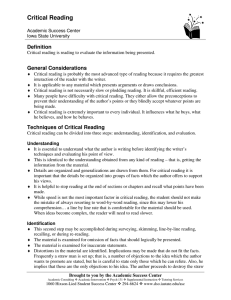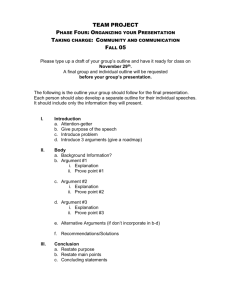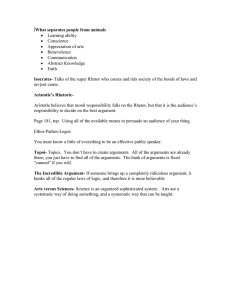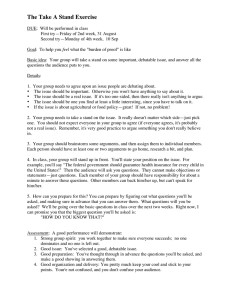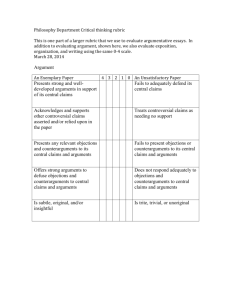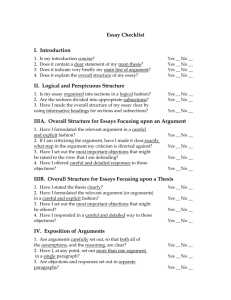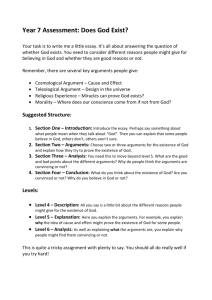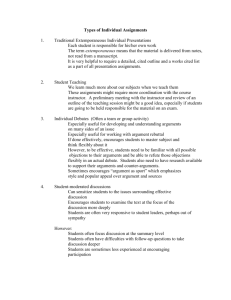7 C's of Argumentation: A Guide to Effective Claims
advertisement
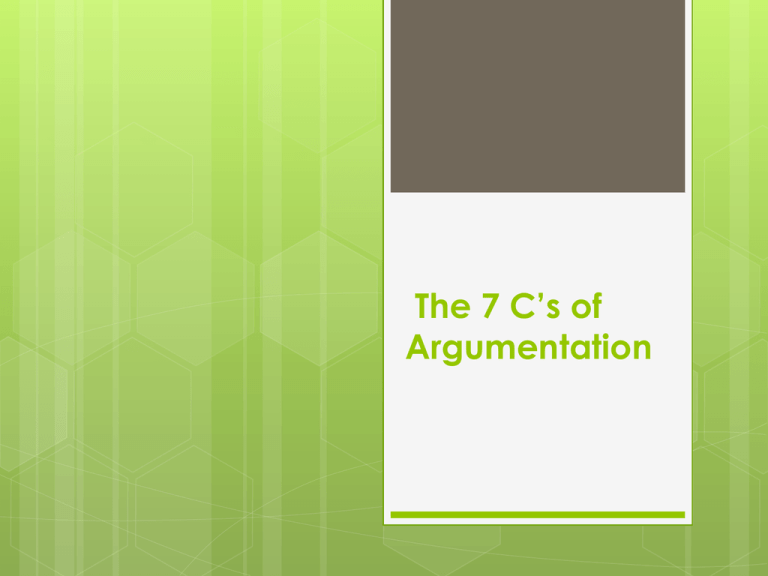
The 7 C’s of Argumentation Consider the Situation What is the topic? What is my purpose? Who is my audience? What action do I want my audience to take? Clarify your thinking What are you trying to prove? Why do you feel the way you do? What kind of proof do you have? Who will be affected by this? Construct a claim (thesis statement) A claim is the position statement or the key point of your argument Claims may contain one or more reasons you will prove Write claim as one coherent sentence Consider key objections— develop Counter arguments Point out flaws/weaknesses in arguments on the other side or arguments you don’t accept List objections Recognize or concede another viewpoint when claim has true weaknesses. This adds believability to overall claim. Consider key objections— Develop counter arguments Concession Starters/Transitional Phrases I admit that It is true that even though Even though Perhaps I agree that Certainly I accept while it is true that I cannot argue that Of course granted Craft your argument Use logical appeals—facts, statistics, expert opinions, anecdotes, and examples Avoid appeals to fear or ignorance Use levels of evidence—a minimum of two pieces of evidence to support each reason Confirm your claim Conclude with a coherent restatement of main arguments Use a call to action
